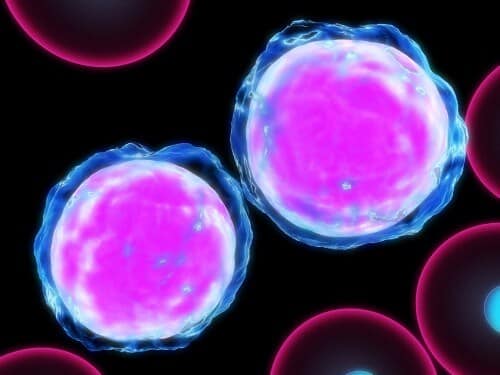Acute lymphocytic leukemia is the most common cancer in children. The fatal disease attacks and kills approximately one in every two thousand children. Thanks to modern medicine, today we can save ninety percent of children with the disease, but it is clear that the disease - and the treatments themselves - leave their mark in the long term

Of all childhood diseases, cancer is the one that scares parents the most. and of all the different types of cancer, Lymphocytic leukemia Acute is the most common. The fatal disease attacks and kills approximately one in every two thousand children. Thanks to modern medicine, we can now save ninety percent of children with the disease, but it is clear that the disease - and the treatments themselves - leave their mark in the long term.
But what if we could prevent the outbreak of cancer in children? This is the new hope that emerges from a review published in the respected magazine "Nature Cancer Reviews", and at the end of it one of the most respected researchers in the field concludes that - "Most childhood cases of acute lymphocytic leukemia are potentially preventable" through vaccination.
In the review, the researcher - Prof. Mel Greaves from the Institute of Cancer Research in London - goes over two hundred previous studies, and puts together a convincing argument for the way acute lymphocytic leukemia develops (we'll call it AML for short, from now on). At the beginning of the research in the field, many researchers believed that cancer was caused by a virus infection that causes the cells to get out of control and become cancerous. But modern studies provide results that do not fit this idea. Thus, for example, toddlers who spend their day in day care, instead of staying in the sterile and sheltered home, are at a lower risk of developing LL - and so are children with older siblings. As every parent knows, dormitories and older siblings are an inexhaustible source of infection with viruses and a variety of diseases. So apparently, it was precisely the increased exposure to viruses that was supposed to increase the incidence of LH. That's not the case - so what's going on here?
Greaves reviews a wide range of evidence and studies, and comes to the conclusion that it is the increased sterility that is responsible for a large part of the cases of infertility. According to the studies presented by Greaves, approximately one percent of fetuses suffer from a mutation while in the womb, which makes some of their cells more vulnerable to the development of cancer - but only if these cells are also attacked by common viruses (which have not yet been identified).
The immune system is supposed to stop these common viruses, but only if it is prepared for them. Throughout the baby's first year, breast milk provides him with some of the immune protection he needs to deal with infections, but the baby's immune system should also begin to learn the environment. And again, as every parent knows, babies tend to put in their mouths any slime and dirt they find on the floor - thus exposing their immune systems to various infections. In babies who are exposed to a wide range of infections, the immune system develops well and is able to better protect them later in life from additional threats - including, apparently, from the viruses that cause the development of leprosy in some children. According to this theory, children who grow up in 'sterile' and clean homes do not develop the immune protection they need. This idea is also known as “The hygiene hypothesis".
This theory is supported by the fact that leprosy is more common in developed countries, where hygiene is more strict. "The problem," writes Greaves, "may be a lack of adhesion. A similar incompatibility between evolutionary adaptations and the modern lifestyle may be the cause of a number of common cancers in adults in the developed world."
Greaves concludes the review with the recommendation to send the toddlers to day care and breastfeed them throughout the first year, but he admits that it may be difficult to implement these recommendations widely. Therefore, he offers a more realistic approach: to develop a vaccine with some of the properties of the common pollutants to which toddlers are exposed in daycare, which will train the children's immune system. Another solution that Greaves does not suggest, but which I think is certainly possible, is to identify the babies who are at risk following the development of the initial mutation in the womb. The genetic sequencing methods available today can allow this at a relatively low cost for each newborn baby. The parents of those children will receive clear instructions regarding their responsibilities: to breastfeed the babies throughout the first year of their lives, to expose them to pollutants (responsibly) and to send them for annual examinations.
Let's conclude: this is not a research breakthrough, but definitely a summary of a whole life's work (Greaves has been researching the Law for forty years) that provides a complete and coherent conclusion. If Greaves is right - and we will probably know this in the coming years - we will most likely be able to dramatically reduce the incidence of one of the most common and deadly childhood diseases. It won't happen tomorrow morning - in fact, it will take a decade or more to develop the vaccine that Greaves proposes - but if science and technology continue to advance, it's hard to see why we can't prevent even the most common childhood cancer today. Our grandchildren will not understand how we could have lived in a time when so many children died of cancer - just as we do not understand today how, before the invention of vaccines, almost all children fell ill with serious and harmful infectious diseases.
